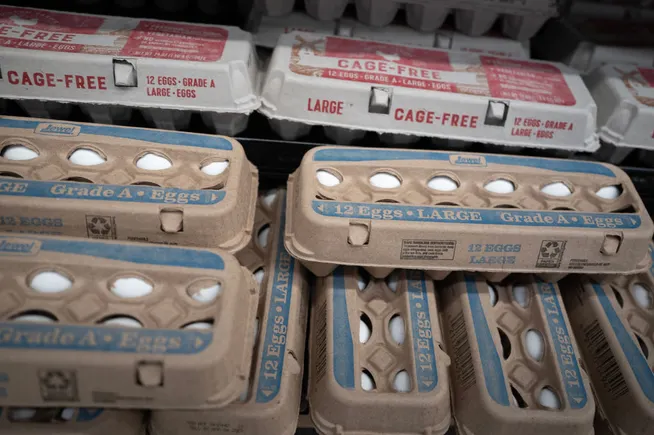The latest data from the U.S. Bureau of Labor Statistics shows that food-at-home prices increased in April at a 2% annual pace, a slight decrease from the 2.4% growth seen in March. Overall inflation also decreased to 2.3% last month, marking its lowest rate since February 2021 and the smallest month-over-month increase since 2020. This decline in grocery inflation in April was the first monthly decrease since October 2024.
Despite concerns about rising food prices due to tariffs, grocery inflation actually slowed down significantly last month. The largest drop in grocery inflation since September 2020 was seen, just before the historic surge in food prices that began in 2021.
Egg prices played a significant role in the grocery inflation rate in April, with a nearly 50% year-over-year increase contributing to a 7% annual growth in the index that includes meats, poultry, and fish. However, recent data from the USDA shows a 17% decrease in the retail price of conventional caged eggs compared to the prior week.
Coffee prices also saw an increase in inflation in April, with instant coffee prices rising by 13.5% and roasted coffee by over 9%. Meat prices, particularly beef and veal, also rose last month. Uncooked ground beef prices increased by 10% annually, while raw steak prices were up by 7%.
On the other hand, pork prices only saw a modest increase of 1.3% in April, with bacon prices rising by nearly 4% and sausage prices decreasing by 1.1%. Ham prices increased by 4.3%.
In terms of other food categories, fresh fruits and vegetables experienced a 0.7% decrease in inflation, with lettuce and tomato prices dropping by over 6%. Dried beans, peas, and lentils, however, saw an increase of nearly 6%.
To address consumer concerns about rising grocery prices, retailers like Meijer have announced temporary price drops on over 70 private label food items. Meijer’s chief merchandising and marketing officer, Don Sanderson, emphasized the importance of providing value to customers during these uncertain times.
Overall, the data from April shows a mixed picture of grocery inflation, with some categories experiencing increases while others saw decreases. As the economy continues to recover from the impacts of the pandemic, monitoring food prices and inflation rates will be crucial for both consumers and retailers.


